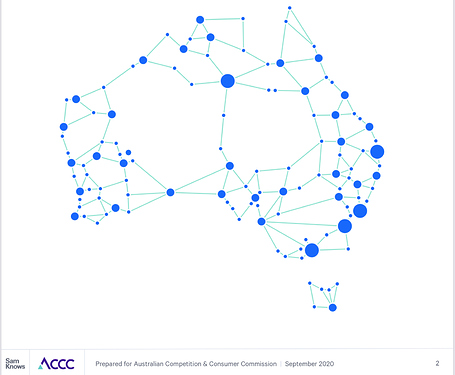The actual data file appears to be a little more useful, but it only reports HFC, FTTN, FTTC, FTTP and ADSL.
Of the 1,250 units reported, 158 are identified as impaired while the remainder are reported as unimpaired. 90 are reported as underperforming, while a further 135 have no information on this.
The really important information, which is not clearly identified, is whether customers are getting anywhere near the promised bandwidth. The data file identifies the ‘tier’ (except with ADSL) as a text field (e.g. “50/20 Mbps”). Disaggregating this allows one to compare the top promised speed with the “All hour maximum download speed”.
So - across the non-ADSL units that have reported actual performance, the best performer according to my figures is a FTTP node that has a maximum download speed on its 100/20 plan of 887Mbps! This is in Tasmania, with ‘other RSPs’, and is one of 23 nodes that have a greater than 100% maximum download speed (the rest being largely under 110%, with one other outlier at 134.36%). These 23 are a mix of technologies, but largely 100/40 or 50/20 tiers (12, or just over half are FTTP). The RSPs vary as well.
There are 19 units whose maximum download speed is less than 50% of what is promised. Interestingly, Telstra is the standout RSP here, with six of the 19. iiNet comes second, with three. The absolute worst performer is a Telstra FTTN unit in NSW, that is recorded as both impaired and underperforming. With a 50/20 plan, the all hour maximum download speed is 8.27Mbps - 16.54% of what the plan is theoretically delivering.
I had not noticed at the time, but Telstra does not appear at all in the 23 ‘high performers’ that have a greater than 100% maximum download speed.
And I am done with spreadsheets for now. While I considered doing a chart of RSP/performance, Excel is not interested in playing nice and I am too lazy.

